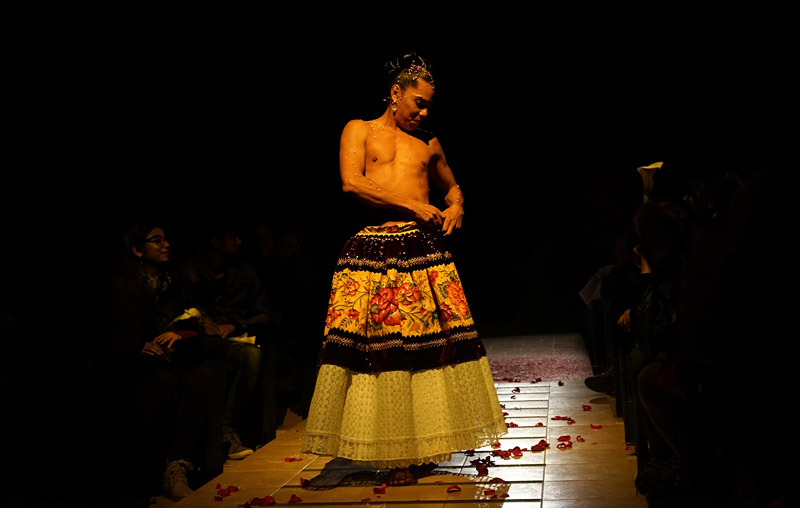Mexico is the country that celebrates the dead. So it’s no wonder that cartels produce them like an assembly line, all the disappeared and murdered. And although no one believes it, in this country, dance is ensuring that the tide can turn again

The man in a skirt
Lukas Avendaño is an indigenous man, a Mexican, free enough to think and act differently than Western norms dictate. As an artist, he offers resistance through dance, with political stagings and using his naked male body. This evokes admiration, anger, and rejection – as though the world were afraid of going down in peace and freedom.
